Shapes of
Diamonds
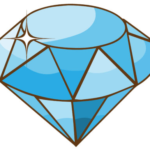


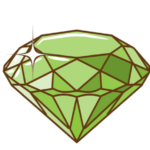
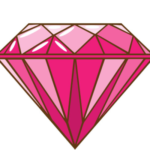
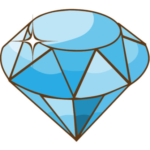

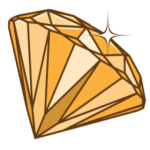
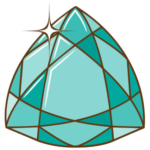
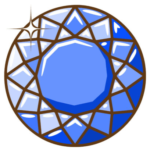
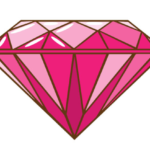
The Round Diamond, or Brilliant Cut Diamond, is by far the most popular shape for diamond engagement rings. It is cone-shaped to maximize light return through the top of the diamond. It is cut to have 58 facets: 33 on the crown and 25 on the pavilion. The relationship between the angle of the crown (above the girdle) and the pavilion (below the girdle) is complementary. A steep crown angle is complemented by a shallower pavilion angle, and vice versa.
The Princess cut diamonds can make the perfect engagement rings since they are very clear. Their exquisite shape makes them an exotic treasure, as they are designed for getting top brilliance from their square cut. When purchasing a Princess Cut diamond, make sure that the setting for your ring protects the four pointed corners. The Princess Cut diamond allows more acceptably for flaws.
The Asscher Cut Diamond, also called a "Square Emerald-Cut", is made using a step-cut process and has cropped corners. Because of the cropped corners, an Asscher Cut Diamond appears almost octagonal at first glance. They are bright, shiny, and clear in appearance. Like Emerald-Cut Diamonds, they have the clarity of glacier-water ice, allowing you to see all the way through the stone. However, since inclusions are obvious to the naked eye with Asscher Cut Diamonds, it is important to get one that is flawless or as close to flawless as possible.
The Cushion Cut Diamond is an antique cut that has a classic, romantic appeal. It is considered a cross between the Old Mine Cut, which was popular in the late 19th and early 20th centuries, and a modern Oval-Cut Diamond. The Old Mine Cut featured large facets and rounded corners, since the cutting was all done by hand at the time. They were designed to catch the beauty of candlelight. The Cushion-Cut Diamond contains 58 facets.
The Emerald-Cut Diamond is a very popular style known for its beauty and precision. While it lacks the brilliance of diamonds cut with triangular and kite-shaped facets, it more than makes up for it in its extreme clarity – it’s like looking into glacier-pure ice. The Emerald-Cut diamond is named so because this style of cut was originally used only on emeralds. It is called a step-cut, which is the cut most commonly used on square or rectangular diamonds.
The Heart Shaped Diamond has a cleft at the top and exhibits superior brilliance. It is among the most romantic of the diamond shapes. When selecting a heart shaped diamond, symmetry is essential, as the two halves of the heart must be identical. The split between the two lobes should be obvious and sharp, and the wings should have a round shape. Generally, heart shapes diamonds of less than .50 carats are not a good choice. As opposed to other diamond shapes, they appear smaller, especially after set in prongs. Bezel and three prong settings are best for small heart shaped diamonds.
The Marquise-Cut Diamond is a boat-shaped brilliant stone that is considered to be a "classic" shape for diamond engagement rings. As with all 'fancy cut' diamonds, color and clarity are the two most important qualities in this particular style of cut. The Marquise-Cut Diamond uses a cutting process similar to that of a Round Brilliant Diamond, but the diamond cutter maximizes the carat weight of the gem by elongating it into its distinctive ''boat-shape''. This way, they can eliminate all inclusions while maintaining as much of the unblemished stone as possible. However, because of the elongated shape, color and clarity imperfections are more obvious than they are in a traditional Round Brilliant Diamonds.
The Oval Cut Diamond is a modified version of the most popular cut, the Round Brilliant. It is the perfect choice for buyers who are looking for characteristics similar to the Round "Ideal" Cut, but would like something in a shape that is more unusual. Oval Cut diamonds also create the optical illusion of length and serve to elegantly elongate fingers.
The Pear Shaped Diamond combines the tradition and brilliance of a round cut with a less common shape to create an unusual diamond that can still make light 'dance' as it does in the traditional Round Brilliant Cut. It is probably the most subjective diamond shape, as its size and proportions are really a matter of taste. The diamond usually contains 58 facets, allowing for light to pass through it much the same way as in a Round, but makes more of an impression because of its much less common shape.
The Radiant Cut Diamond combines the more stylish square or rectangular shape with the brilliance of the more traditional Round Cut. It combines two diamond cutting styles-the Round Cut style and the Emerald Cut style, to create a non-traditional, yet still brilliant, diamond. This cut, created in 1977 by Henry Grossbard, was designed to maintain the beauty of each different type of diamond, while still creating something altogether different from anything available at the time.
